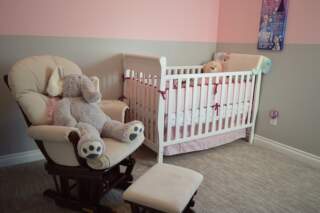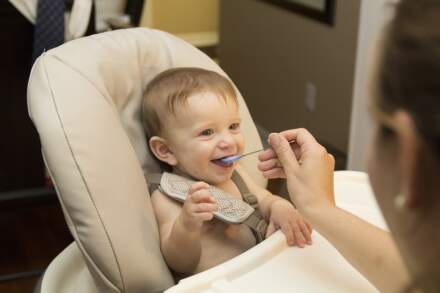Creating a well-rounded wardrobe for children can feel overwhelming for many parents. With ever-evolving fashion trends, seasonal changes, and varying child preferences, it seems like a continuous task. However, by focusing on a few essential pieces, parents can build a functional and fashionable wardrobe that caters to their child’s needs. This article explores the fundamental components of a versatile kids’ wardrobe, offering insights into key items that ensure both style and practicality.
Understanding Versatility in Kids’ Fashion
Children lead active lives filled with play, exploration, and growth. Their clothing should accommodate their dynamic schedules while also reflecting their unique personalities. When building a kids’ wardrobe, the focus should be on versatility: pieces that can be mixed and matched for various occasions, easily layered, and comfortable for daily wear. Versatile wardrobe staples not only simplify dressing but also promote creativity in a child’s self-expression.
1. Essential Clothing Categories
A well-rounded kids’ wardrobe should cover various occasions and environments, including playdates, school, and family gatherings. Here are key clothing categories every child’s closet should include:
a. Everyday Tops
Versatile tops, including t-shirts, long-sleeve shirts, and casual blouses, should form the backbone of any child’s wardrobe. Opt for neutral colors that can be paired with different bottoms, while also including a few playful prints or graphics that align with your child’s interests. Breathable fabrics like cotton are typically ideal for keeping children comfortable during playtime or school hours.
b. Bottoms
A mix of pants, shorts, skirts, and leggings provides options for all types of weather and activities. Comfortable, well-fitting jeans or chinos are essential for everyday wear, while shorts and breathable leggings cater to warmer seasons or physical activities. When selecting skirts, consider flowy options that allow freedom of movement, enhancing comfort throughout the day. Elastic waistbands are an added bonus for ease of wear, especially for toddlers.
c. Outerwear
As weather conditions fluctuate, children require appropriate outerwear. A lightweight jacket or cardigan is perfect for transitioning seasons, while a heavier coat might be necessary for colder months. Look for items that offer insulation without sacrificing mobility, as kids will want to run and play outdoors regardless of the weather. Additionally, consider waterproof options for rainy days.
2. Footwear Fundamentals
Shoes are another essential element in building a child’s wardrobe. Selected footwear should cater to various activities, ensuring your child has the right shoes not only for play but also for special occasions.
a. Sneakers
A good pair of sneakers is non-negotiable. They should be durable, comfortable, and versatile enough to transition from playground to classroom. Look for styles that incorporate breathable materials and have a supportive ankle structure, particularly for younger children who are still developing their coordination.
b. Dress Shoes
While practicality is essential, children will also encounter events requiring dressier footwear, such as family gatherings or school performances. A good pair of loafers or simple dress shoes can elevate an outfit and ensure your child looks polished on special occasions.
c. Sandals and Boots
For warmer months, a pair of sturdy sandals will ensure your child’s feet stay cool while allowing easy slip-on access. In contrast, durable waterproof boots are crucial for winter weather, providing insulation and protection from the elements during snow or rain.
3. Accessories for Individuality
Accessories play a significant role in allowing children to express their personality. Even a basic outfit can be transformed with the right selection of accessories.
a. Hats and Scarves
In colder seasons, hats and scarves not only add warmth but also complement an outfit. Choose colorful or patterned options that your child enjoys wearing. In summer, a wide-brimmed hat provides coverage from the sun while maintaining a stylish edge.
b. Backpacks
Backpacks are essential for school-aged children. They should be practical yet fun, allowing your child to carry their belongings comfortably. Choose a backpack that fits well and has enough compartments to organize school items, sports gear, or personal belongings.
c. Jewelry and Hair Accessories
For those children who enjoy a bit of glam, simple jewelry like bracelets or necklaces can add a personal touch to their outfits. Also, hair accessories such as clips, headbands, and pins enable girls to mix and match while providing practicality for hair management.
Conclusion
Building the perfect kids’ wardrobe involves selecting versatile, functional, and stylish pieces that cater to a child’s dynamic lifestyle. By focusing on essential categories — tops and bottoms, footwear, and accessories — parents can create a wardrobe that allows children to fully express themselves while being prepared for whatever their day may bring.
Remember, the key to a successful kids’ wardrobe lies in its ability to adapt to different occasions and seasons. Prioritizing comfort, fit, and individual expression will ensure that kids feel confident and free to engage in their favorite activities, all while looking fabulous. As children grow and their tastes change, a curated selection of essential pieces will make dressing both fun and straightforward, fostering a sense of style that they can carry with them into adulthood.











Leave a Comment